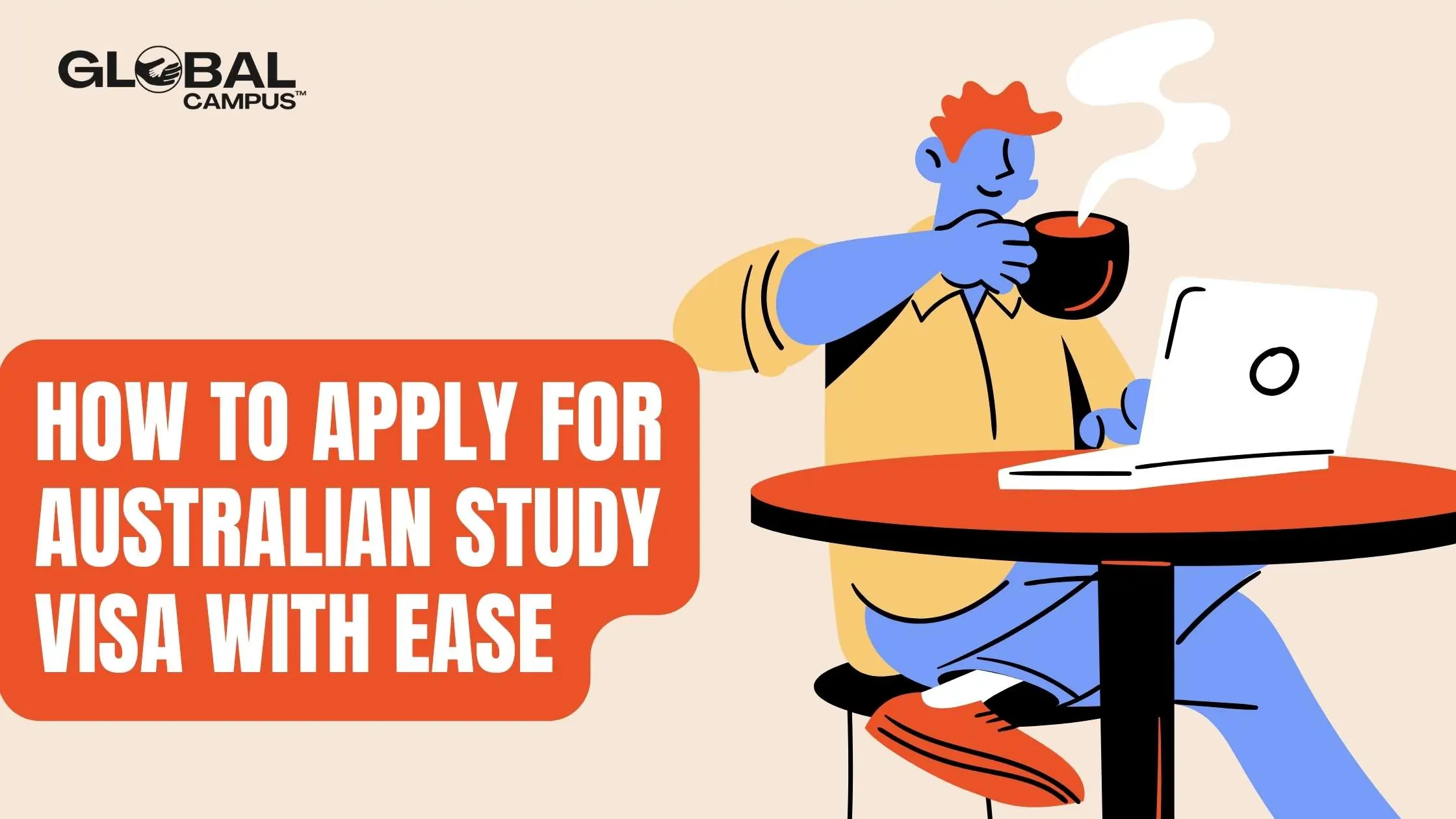
Australia Increases International Student Cap to 295,000
Australia raises foreign student cap by 9% to 295,000 for 2026. Complete guide for Indian students on new opportunities, requirements, and application process.
Introduction:
Australia is a favourite study destination for foreign students to study because it offers a wide range of cultural experiences and top-notch education. Australia is a great place to study because it has many top-ranked universities, a wide range of academic programmes, and wonderful job prospects after graduation. Australia is a great place to study for students from all over the world because it has a high standard of living, friendly people, and beautiful natural scenery.
If you are an international student and want to study in Australia, you will need a student visa. There are different types of student visas for Australia that depend on the level of study chosen. There is a subclass 500 Australia study visa for first-year students and a subclass 485 visa for graduate students. Different people can get both cards, and each has a different fee.
The rules for getting a student visa to Australia have changed, and starting July 1, 2016, a Simplified Student Visa Framework (SSVF) is in place. The Australian Government’s Department of Immigration and Border Protection has made changes to the rules for visas. As of July 1, 2016, all students who want to study in Australia must apply for a visa under Subclass 500.

Introduction:
Australia is a favourite study destination for foreign students to study because it offers a wide range of cultural experiences and top-notch education. Australia is a great place to study because it has many top-ranked universities, a wide range of academic programmes, and wonderful job prospects after graduation. Australia is a great place to study for students from all over the world because it has a high standard of living, friendly people, and beautiful natural scenery.
If you are an international student and want to study in Australia, you will need a student visa. There are different types of student visas for Australia that depend on the level of study chosen. There is a subclass 500 Australia study visa for first-year students and a subclass 485 visa for graduate students. Different people can get both cards, and each has a different fee.
The rules for getting a student visa to Australia have changed, and starting July 1, 2016, a Simplified Student Visa Framework (SSVF) is in place. The Australian Government’s Department of Immigration and Border Protection has made changes to the rules for visas. As of July 1, 2016, all students who want to study in Australia must apply for a visa under Subclass 500.
As of July 1, 2016, a student subclass 500 visa lets you stay in Australia for as long as you are in school, which is usually up to five years from the date you started. For a smooth stay, make sure your visa is still current and that you follow the rules for the Australian student visa that are written on it. On the website of the Australian Government’s Department of Home Affairs, you can find out more about this type of visa.
Scope of the Subclass 500 Visa:
December 12, 2023, The Australian Government has declared its intention to strengthen visa regulations, requiring international students to achieve higher scores on English language proficiency exams. This measure aims to replace low-skilled workers with high-skilled workers in the future. Additionally, the extended duration of the stay will be reduced for those who choose to remain after completing their studies. Additionally, there is a suggestion to establish a specialised visa for skilled individuals, accompanied by a revised processing timeframe that will result in a reduction of one week.
On May 7, 2024, Australia declared that starting from 10 May 2024, international students seeking a student visa must demonstrate financial resources amounting to AUD 29,710 to cover their living costs in Australia. Not complying with this requirement might result in the denial of student visa applications in Australia.
Starting on July 1, 2023, students who are enrolled in Australian educational institutions and hold a valid student visa will have the opportunity to work for a maximum of 48 hours every two weeks.
On March 2, 2023, the education ministers of Australia and India signed the first-ever Mechanism for the Mutual Recognition of Qualifications between Australia and India. Australia and India have entered into a significant agreement to formally acknowledge and accept qualifications from each other’s countries, allowing individuals to gain entrance to higher education in both nations.
Starting 1st July 2024, the base application fee for student visa has been revised to AUD 1600, additional applicant fee is AUD 1190 for those aged 18 & over. The application charge for additional applicants under 18 is AUD 390.
Previously, visas were classified as immigration risks, with students from particular countries being classified under the Assessment Level Framework. The updated standards now incorporate a consolidated national and immigration risk framework, replacing the previous Assessment Level Framework. Furthermore, the use of paper applications has permanently ceased. The new SSVF classifies students based on two criteria:
1. Citizenship: It is important to understand that a student’s nationality is defined by their passport. The nationality stated on the passport will be taken into consideration regardless of the location where the students are applying for the visa. An Indian student residing in the UK and seeking a visa from within the UK will be assessed according to the risk levels assigned to India by the Department of Immigration and Border Protection (DIBP).
2. Risk of default by the education provider: Certain universities in Australia have been identified as more vulnerable than others.
The following table illustrates the categorization of students according to the newly implemented SSVF regulation.
SSVF Framework | Country Immigration Risk | |||
One | Two | Three | ||
University’s Risk Category | One | Streamlined | Streamlined | Streamlined |
Two | Streamlined | Streamlined | Regular | |
Three | Streamlined | Regular | Regular | |
The Department of Immigration and Border Protection (DIBP) utilises a tool to categorise students according to whether they fall under the streamlined or regular process. The system would automatically generate the list of documents that students must provide. Students should ensure that they have all the necessary paperwork prepared, as the Department of Immigration and Border Protection (DIBP) has the authority to request any or all the documents during the application process.
The Australian Student Visa (subclass 500) base application fee is AUD 1600 (from July 2024) for those who are 18 years & older and AUD 390 (from July 2024) for individuals who are under 18. It is not mandatory for the Australian Government to have a visa label affixed to your passport for travel, entry, or stay in Australia. The table below provides information on the fees associated with Australian student visas, serving as a reference for potential applicants:
Student Visa Fee in 2024 (Subclass 500):
A Confirmation of Enrolment (CoE) is an official document sent by your educational institution to confirm your registration in a particular course. The Certificate of Enrollment (CoE) will be issued to you subsequent to your acceptance of the Letter of Offer and payment of the required deposit.
If you wish to enrol in Australian educational courses, it is necessary to provide a proof of results from an authorised English language exam, as the courses are conducted in English. This certificate will serve as evidence to the Australian Government that you possess the requisite English language skills necessary for success in your course.
Only specific tests that meet the Australian Government’s criteria are considered acceptable, yet they are readily available worldwide.
When completing the online student visa application form, you must submit an English statement and supporting papers that demonstrate your compliance with the genuine temporary entrant (GTE) criteria.
The written message must not exceed 300 words, with a character restriction of 2000. In addition, it is necessary to affix supplementary documents to your application within your ImmiAccount.
To qualify for a student visa, you must demonstrate that you have enough money to support yourself during your stay. There are two ways to achieve this requirement:
Provide bank statements, fixed deposits, loan letters, or proof of full grants or scholarships. This will demonstrate that you have enough money to meet all of your charges and expenses during your study, such as travel, course fees, and rent. For additional information on the minimum required finances, go to the Department of Home Affairs website and select ‘Gather your paperwork’.
As an international student in Australia, you must have Overseas Student Health Coverage (OSHC) throughout your stay.
If you do not produce proof of this insurance, your student visa application will be denied.
The Australian government requires all international students to be in excellent health before entering the country. As a result, you may be required to undergo a health examination in order to meet the student visa health requirements.
There are also some character standards to achieve if you wish to study in Australia. In your application, you must answer some basic questions regarding your character and previous behaviour. In some situations, you may be asked to provide a police background check.
The process for getting an Australian student visa can take up to 124 days before the start of your course. In addition, you can visit Australia up to 90 days before the start of your study. The new SSVF Guidelines say that the whole process of getting an Australian student visa from India must be done online. These are the steps you need to take.
Based on the level of study, there are different kinds of student visas. The major one is the Subclass 500 Australia study visa for first-year students. For graduate students, there is also the Subclass 485 visa.
The SSVF took the place of the old Assessment Level Framework and made the process of applying for a visa easier. Now, students are put into groups based on their nationality and the level of risk at the institution they picked. Paper applications are no longer accepted.
Required documents include an offer letter from the educational institution, Confirmation of Enrolment (CoE), English proficiency test results, a Genuine Temporary Entrant (GTE) statement, proof of adequate funds, Overseas Student Health Cover (OSHC), and possibly a medical examination and police background check.
The application process can take up to 124 days before the start of the course. Applicants can enter Australia up to 90 days before the start of their study.
Recent changes include higher requirements for English language skills, additional funds to cover living costs, the ability for foreign students to work, and the recognition of qualifications between Australia and India.

Australia raises foreign student cap by 9% to 295,000 for 2026. Complete guide for Indian students on new opportunities, requirements, and application process.

While half the internet is crying about Australia’s new ₹1,33,000 visa fees, the students who GOT IN are literally laughing all the way to the bank.

Boost your Australian part-time job opportunities with these 9 essential short courses. Find out how these courses can open doors to diverse job opportunities.
Fill in your details & we’ll call you back within 48 hours.